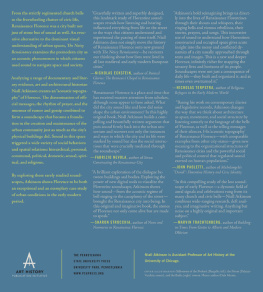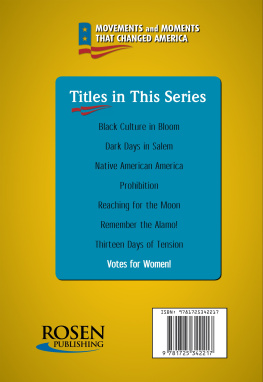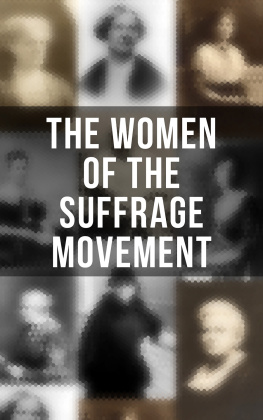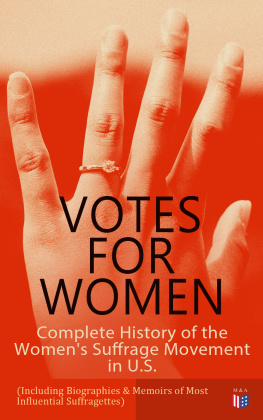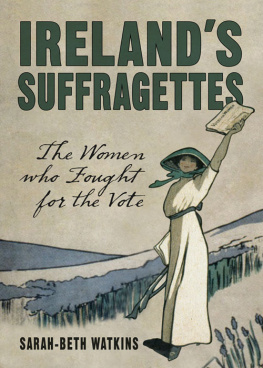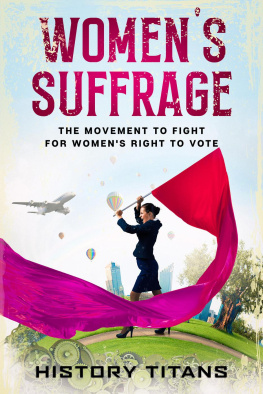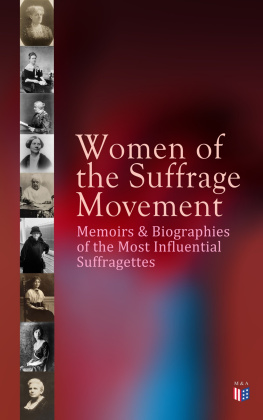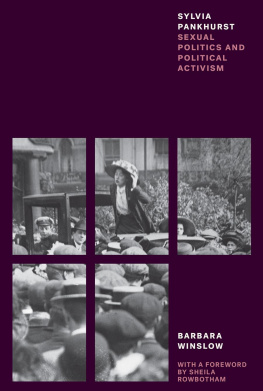RISE UP, WOMEN!
For Patrick Hughes
BY THE SAME AUTHOR
Funny Girls: Cartooning for Equality
The Suffragettes in Pictures
Love and Dirt: The Marriage of Arthur Munby and Hannah Cullwick
Elsie and Mairi Go to War: Two Extraordinary Women on the Western Front
The Criminal Conversation of Mrs Norton
RISE UP, WOMEN!
The Remarkable Lives of the Suffragettes
Diane Atkinson

We hand the key to the coming generations to unlock the door to Freedom and Equal Opportunity. It is for them to campaign for and bring to glorious fruition the great reforms we dreamed of, but being voteless women, were unable to negotiate.
Jessie Stephenson typescript, No Other Way (1932)
Contents
Rise Up, Women! is a collective biography of the suffragette movement, illuminating the lives of more than a hundred women who took part in the militant campaign for votes for women in Great Britain between 1903 and 1914. It explores who the suffragettes were and what they brought to the most daring political campaign of the twentieth century.
For a long time the campaign of the Womens Social and Political Union (WSPU) has been dismissed as a hobby for self-interested middle-class women, but here we read what a large part working-class women played in the struggle for the right of women to vote. Despite danger, considerable suffering and public opprobrium, these women persisted unwaveringly in their aims.
Among them we meet, of course, the well-known Pankhurst family, Emmeline, Christabel, Sylvia and Adela; mill girl Annie Kenney, the WSPUs poster girl from Oldham; Emily Davison, whose deathly dash at the Derby in 1913 was captured on film; and Lady Constance Lytton, who adopted the alias Jane Warton to experience how ordinary suffragettes were treated when they were sent to prison. But we also meet many lesser known figures such as Edith Rigby, a Preston doctors wife whose unique dress sense declared her unconventional views and earned the enmity of her neighbours who tried to drive Mrs Rigby and her family out of town; or Dora Thewlis, a weaver, who was sixteen when she came from Huddersfield to be arrested in Westminster; bootmakers Alice Hawkins and her husband Alfred, who kept the WSPUs tricolour flying in Leicester during the militant campaign; Minnie Baldock, a shirt machinist, who founded the first WSPU branch in Canning Town, east London, in 1906, and recruited many women from Poplar, Custom House and East and West Ham; Charlotte Drake, a mother of four from Custom House, who went to work with Sylvia Pankhurst in the East End; Ethel Moorhead, an artist from Dundee, who threw herself into the Scottish struggle on the death of her father; Grace Marcon, a clergymans daughter from Norfolk, who was a masseuse and gymnastics teacher and joined the WSPU in 1910; music-hall artiste Kitty Marion, who started on stage in panto in Glasgow in 1890 and whose career and health were both undermined by her activism (in prison in 1913 she was force-fed more than 200 times); Mary Gawthorpe from Leeds who was apprenticed as a pupil teacher at thirteen; Tough Annie Cappuccio, who lived in Stepney, where her father owned a sweet shop; Hannah Mitchell, a dressmaker from a poor farming family in Derbyshire, who escaped from her violent mother and joined the WSPU when disillusioned with the Independent Labour Party; Elizabeth Wolstenholme Elmy, and Englands first woman doctor, Elizabeth Garrett Anderson, who were both in their seventies when they walked with the suffragettes to Parliament and were roughly handled by the police; sisters Annie, Florence, Minnie, Irene and Dora Spong, tunic-wearing, sandalled, vegetarian suffragettes, who were artists in music, dance, painting and weaving (Dora was also a midwife in the slums of Battersea and Tottenham); the Murphy sisters (Leila and Rosalind Cadiz), who came to London from Dublin in 1911 to join suffragette protests and in 1912 smashed windows in their home city; bank managers daughter May Billinghurst, who pushed herself around in an invalid tricycle; Ethel Smyth, who composed the suffragette battle anthem The March of the Women; debutante and drug addict Lavender Guthrie, who committed suicide in 1914; the noble Fred and Emmeline Pethick-Lawrence, who gave the modern equivalent of hundreds of thousands of pounds of their own money to bankroll the campaign, only to be purged from the organisation in 1912, and yet who refused to reproach Mrs Pankhurst and her daughter Christabel for their callous behaviour; and from the USA, Alice Paul and Lucy Burns, who were studying in London when they became suffragettes, and left the United Kingdom with prison records, and who transplanted WSPU tactics to invigorate the American womens suffrage campaign. The lives of all these remarkable women, and a great many more who feature in this book, together make up the extraordinary story of the militant campaign for Votes for Women.
*
Sylvia Pankhursts The Suffragette Movement, published in 1931, is a detailed account of the suffragette campaign and about the Pankhurst familys role. Underlying family tensions of which there is no mention in Mrs Pankhursts My Own Story, published in 1914, and Christabels autobiography, Unshackled: The Story of How We Won the Vote (1959) boiled over in the early days of 1914 when Sylvia was summoned to Paris to be admonished about her relationship with the Labour Party. Sylvia Pankhurst suffered much for the campaign weeks of hunger- and sleep-striking, which gave her mother immense pride. Christabel disliked all politicians, not just Labour men: she was of the view that no politician could be trusted, and disapproved of Sylvias close ties to her intimate friend Keir Hardie. In 1907 Christabel had said that Liberal politicians many of whom professed to support womens suffrage were as wily as serpents; her opinion would harden as the lies piled up.
The militant campaign for the female vote was like a drama that ran for more than ten years: it had constant stars, scores of supporting actors, hundreds of walk-on parts and a vast chorus who created successful spectacles. These performances were written, directed and played out by a fluid group of politically motivated women, sometimes helped by men, who sacrificed and made friendships, reputations and employment in the struggle.
Mrs Pankhurst discovered, from hearing about the Battle of Peterloo in Manchester in 1819, that you need a huge performance in front of a big audience to effect large political change. She knew the value of events that would later be broadcast via the newspapers to politicians, the voters and supporters.
The suffragette campaign was a defiant panorama of first nights, long runs, tragedies, comedies and coups de thtre. The suffragettes, unlike the quieter, more staid suffragists of the National Union of Womens Suffrage Societies (NUWSS), practised street theatre, chalking pavements, mass demonstrations, arson and fire-bombing pillar boxes. Their pageants and interruptions of meetings all too often ended in the prison cells.
One hundred years after the historic moment when the vote was granted to some women it is time to take a fresh look at the daring and painful struggle that eventually achieved political representation for all British women, to reflect on what we would have done in their situation and, above all, to salute them.
Diane Atkinson,
London, May 2017



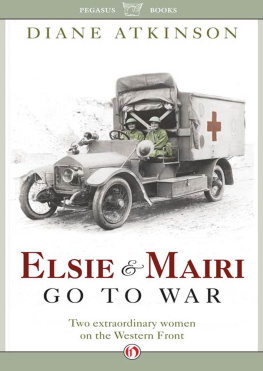

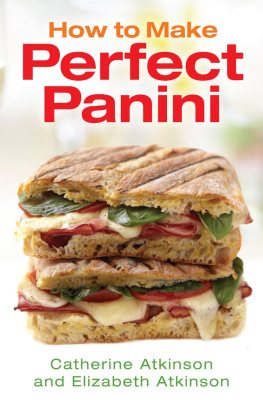
![Atkinson - An army at dawn: [the war in North Africa, 1942-1943]](/uploads/posts/book/178818/thumbs/atkinson-an-army-at-dawn-the-war-in-north.jpg)

